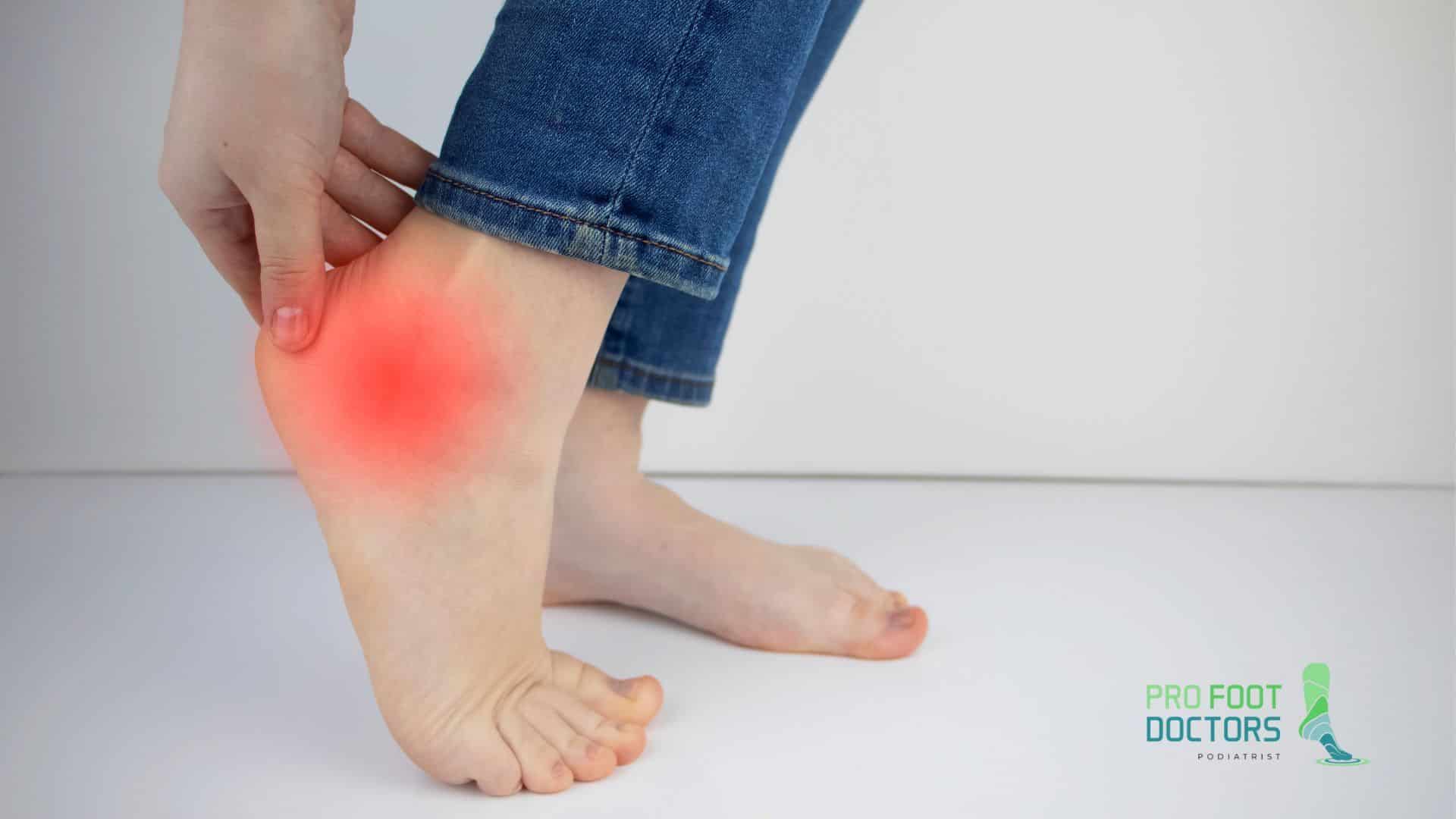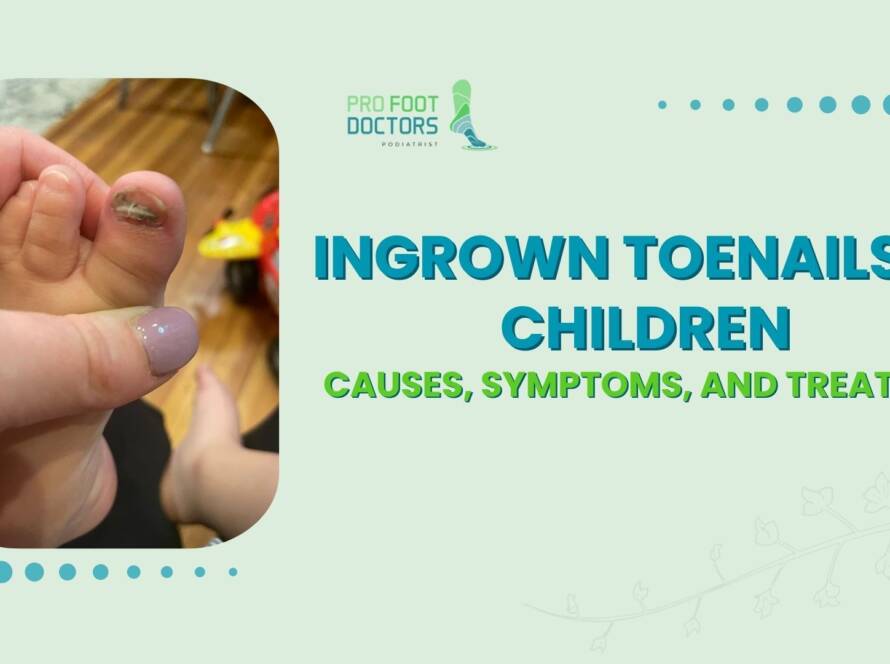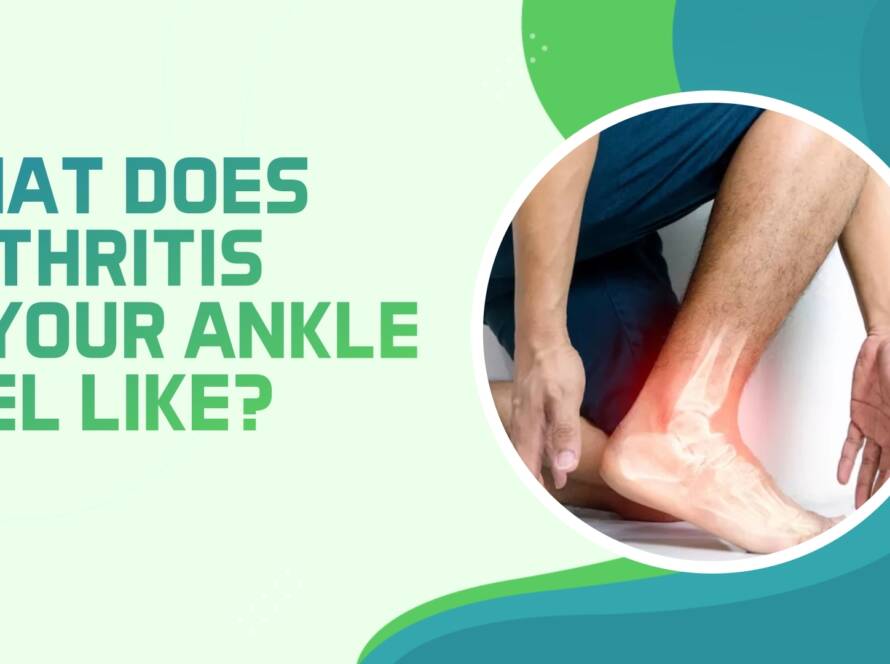Are you experiencing sudden ankle pain without injury or swelling? It’s probably just a sprain. But what if it’s something more serious? Today, we’re going to discuss what can cause foot and ankle pain without injury and what you can do to make it better.
What Causes Ankle Pain Without Injury?
Wondering, ‘Why do I have a constant pain in my ankle?’ Unfortunately, there are a number of reasons why the sharp pain in the ankle comes and goes suddenly.
1. Sprained Ankle

If you follow at-home treatment instructions like rest, ice, and elevation, the majority of ankle sprains heal on their own. More serious situations, however, might call for physical treatment or even surgery. You can consult a specialist for more help.
2. Achilles Tendonitis
Achilles tendonitis is an inflammation of the tendon that connects the calf muscle to the heel bone. This condition is widespread among athletes and is frequently brought on by stress on the joints. Achilles tendonitis symptoms include heel and lower limb stiffness and moderate to severe pain in the foot. So, if you see swollen ankle pain with no injury, it can be a sign of Achilles Tendonitis.
3. Plantar Fasciitis
Plantar fasciitis is a medical condition that causes stiffness and pain in the heels. It makes the plantar fascia inflamed. Sharp or searing pain in the heel, usually worse in the morning or after prolonged standing or sitting, is one of the symptoms of plantar fasciitis.
4. Ankle Arthritis

Ankle pain is frequently caused by arthritis, particularly in people over 65. Degenerative joint conditions like arthritis are brought on by the breakdown of the cartilage that cushions the joints. If your ankle pain without injury or swelling is caused by arthritis, you may need immediate medical attention.
5. Bunions
A common foot malformation that can cause mild to moderate pain is bunions. A bunion is a bony protrusion that develops on the big toe’s base joint. The toe may tip inward as a result of this bulge, crowding the other toes and producing sore pressure spots. Finding shoes that fit properly can be challenging for people with bunions.
If you wake up wondering ‘why does my ankle only hurt sometimes’, it might be because of bunions.
6. Ankle Instability
A condition known as ankle instability causes the ankle joint to become unstable and give way. This may result in discomfort, swelling, and trouble walking. An injury to the ligaments supporting the ankle joint is frequently the cause of ankle instability. So, the next time you have throbbing pain in your ankle with no injury, you might be experiencing ankle instability.
7. Tarsal Tunnel Syndrome
One of the reasons for ankle pain without injury can be tarsal tunnel syndrome. The tibial nerve, which passes via the tarsal tunnel, gets compressed and causes pain. Shooting pain in the foot is one of the symptoms of tarsal tunnel syndrome, and it usually gets worse at night.
8. Not Wearing Proper Footwear
One of the most frequent reasons for foot pain is wearing improper footwear. As we’ve previously discussed bunions, plantar fasciitis, and other foot issues can be brought on by wearing shoes that don’t fit right. Shoes like flip-flops and high heels can still cause foot pain even if they fit properly. It’s important to select footwear that supports and cushions the feet.
Foot and Ankle Pain Treatment Options
Treatment for each patient is based on the exact cause of their pain, but there are some generic therapies that work well for a wide range of problems. The following are a few of the initial actions you could try to relieve pain:
- Rest: The most effective treatment for foot and ankle pain is rest. This means staying away from strenuous activities like prolonged standing or jogging that tire the feet.
- Ice: Ice can ease discomfort and swelling. Apply an ice pack to the painful area for 15 minutes throughout the day.
- Compression: Compression has the potential to reduce swelling. The affected area can be gently compressed using an elastic bandage or compression sock.
- Elevation: Try to keep your foot above your body level to reduce swelling.
Your podiatrist might also suggest over-the-counter or prescription anti-inflammatory drugs. It’s a good idea to consult a doctor before you try any unnatural remedies at home for your ankle ligament pain and no injury problems.
Related Questions
1. What is the sensation of ankle arthritis?
Ankle arthritis is characterized by pain, deformity, swelling, and instability in the ankle joint. Ankle arthritis also affects the tibiotalar joint, which joins the shin bone to the ankle bone. Gentle exercising can help with the swelling.
2. What are the signs of osteoporosis?
Unusual fractures of the foot or ankle may be the first sign of osteoporosis. It causes long-term deformity and can lead to spine fractures. Furthermore, discomfort and soreness in the fractured ankle occur when a bone breaks away from the spine.
3. What are Osteochondral Lesions of the Talus?
A quick injury such as a sprain can result in fractures, blisters, or sores in the bone as well as cause damage to the cartilage on your talus. It could be an OLT if you feel like your ankle is catching, locking up, or hurting months after the issue was treated. You may need to use crutches to keep your weight off your ankle and wear a cast to keep it stable. Your physical therapist will gradually add new exercises to relieve the pain.
4. What happens in Ankle Fractures?
A fracture is a type of bone break that can be as tiny as a crack or as large as a full rupture. Severe pain, bruises, and trouble moving the injured foot are all signs of a broken ankle.
In case you’re uncertain if you have a fracture, you should seek medical help. The diagnosis can be confirmed by an X-ray.


